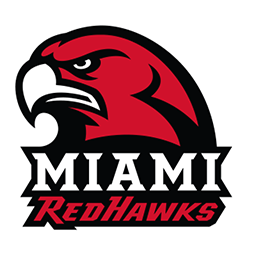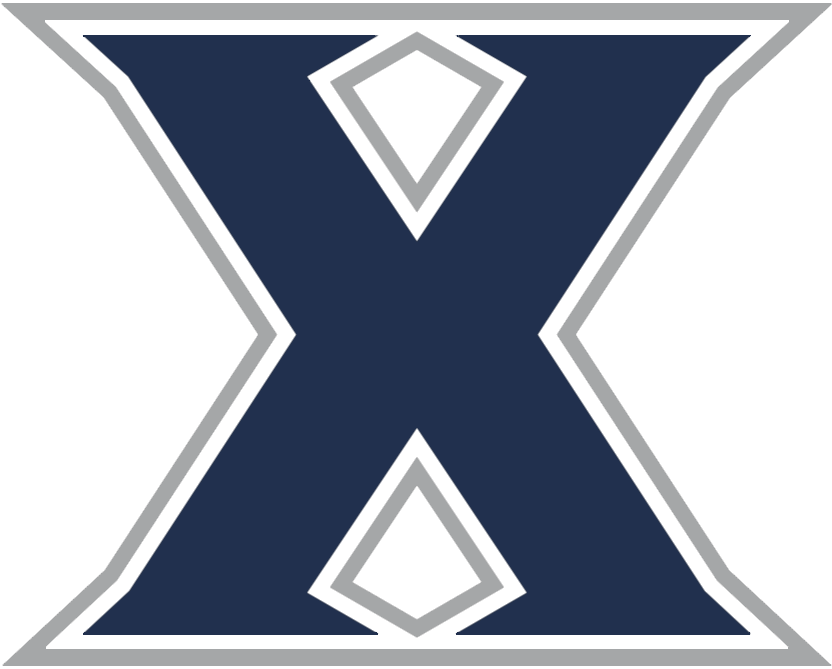BRIDGEPORT, Pa. — The Men’s Collegiate Club Spotlight focuses on the Great Lakes Division of Davenport University, Grand Valley State University, Miami University (Ohio), the University of Cincinnati, the University of Dayton, the University of Notre Dame and Xavier University.
HISTORY: Founded in 1997. the Great Lakes Division membership has changed over the years as the Great Plains and Heartland Divisions were created from the group in 1999.
The Great Lakes – which split into the Great Plains and Heartland Divisions prior to reforming in 2002 – has been dominated by Grand Valley State over the past 20 years as the Lakers hold nine titles (2002, 2003 2004, 2005, 2006, 2007, 2008, 2010, 2016) along with four runner-up marks (2009, 2011, 2015, 2017).
Reigning division champion Notre Dame – which claimed its inaugural Great Lakes crown in 2019 – is a 10-time runner-up (2002 ,2003, 2004, 2005, 2006, 2007, 2008, 2012, 2013, 2018) as the Lakers and Irish are the lone active programs in the division to hold championships. Cincinnati is the only other team in the division to make the title game as the Bearcats faced Notre Dame for the 2019 tilt.
The rest of the division crowns and title game appearances belong to former Great Lakes competitors as Iowa State University (1997) and Western Illinois University (1998) downed current Heartland Division member Macalester College (1997) and the University of Nebraska (1998), respectively, in the inaugural title games.
The University of Illinois-Chicago holds four titles (1999, 2011, 2012, 2015) and a pair of second place marks (2010, 2014), while current Big Ten Division program The Ohio State University accounts for the final four crowns (2013, 2014, 2017, 2018) and runner-up spot (2016).
On the national stage, Great Lakes Division teams have made the Men’s National Collegiate Club Championship four times since 1994 as Dayton finished second to the United States Military Academy in 1994 prior to claiming the national title in 1995 versus Army. Grand Valley State also appeared in back-to-back title games as the Lakers topped Michigan State University in 2005 prior to suffering a setback versus the Spartans in 2006.
Great Lakes Division Champion/Runner-Up
- 1997 – Iowa State University / Macalester College
- 1998 – Western Illinois University / University of Nebraska
- 1999 – League splits into Great Plains and Heartland Divisions – division reforms in 2002
- 2002 – Grand Valley State University / University of Notre Dame
- 2003 – Grand Valley State University / University of Notre Dame
- 2004 – Grand Valley State University / University of Notre Dame
- 2005 – Grand Valley State University / University of Notre Dame
- 2006 – Grand Valley State University / University of Notre Dame
- 2007 – Grand Valley State University / University of Notre Dame
- 2008 – Grand Valley State University / University of Notre Dame
- 2009 – University of Illinois-Chicago / Grand Valley State University
- 2010 – Grand Valley State University / University of Illinois-Chicago
- 2011 – University of Illinois-Chicago / Grand Valley State University
- 2012 – University of Illinois-Chicago / University of Notre Dame
- 2013 – The Ohio State University / University of Notre Dame
- 2014 – The Ohio State University / University of Illinois-Chicago
- 2015 – University of Illinois-Chicago / Grand Valley State University
- 2016 – Grand Valley State University / The Ohio State University
- 2017 – The Ohio State University / Grand Valley State University
- 2018 – The Ohio State University / University of Notre Dame
- 2019 – University of Notre Dame / University of Cincinnati
National Collegiate Club Champion/Runner-Up
- 1994 – United States Military Academy / University of Dayton
- 1995 – University of Dayton / United States Military Academy
- 2005 – Grand Valley State University / Michigan State University
- 2006 – Michigan State University / Grand Valley State University
THE TEAMS: The Great Lakes Division is comprised of teams from the states of Indiana (Notre Dame), Michigan (Davenport, Grand Valley State), Ohio (Cincinnati, Dayton, Miami, Xavier).
 Davenport University
Davenport University
The newest program in the Great Lakes Division, Davenport University joined the Collegiate Water Polo Association (CWPA) for the 2019 season.
A private, not for profit, university with campuses throughout Michigan and online, Davenport was founded in 1866 by Conrad Swensburg and currently offers associate’s, bachelor’s, and master’s degrees; diplomas; and post-grad certification programs in business, technology, health professions and graduate studies (MBA). Davenport’s W.A. Lettinga Main Campus is in Grand Rapids, Michigan.
The campus contains three academic buildings, a field house/student activities center, two suite-style residence halls, and one traditional-style residence hall with a full cafeteria.
In addition to the main campus, Davenport University offers classes at other locations throughout Michigan including a Corporate Campus in Grand Rapids; institutional campuses in Holland, Lansing, Midland, and Warren; as well as University Center locations at Mott Community College (Flint), Kalamazoo Valley Community College (Kalamazoo), Northwestern Michigan College (Traverse City), Wayne Community College (Detroit), and Macomb Community College (Clinton Township).
Davenport University offers more than 50 areas of study and confers degrees from its five colleges. The university has a faculty-student ratio of 14:1 and an acceptance rate of 82%. Davenport specializes in business majors, with the Business Administration and Management program being the most popular major, with close to 20% of enrolled undergraduate students. Other popular majors include Accounting, Business/Commerce, Marketing/Marketing Management and Human Resources Management.
There are currently approximately 7,500 enrolled students with a slightly older skew in age for the students. The average age of an undergraduate is 28, while the typical graduate student is 34. 71 percent of students are full-time with 112 international students on campus from 34 countries. Further, approximately 95% of full-time students receive aid
For more information on the Davenport men’s collegiate club team, contact head coach Derek Zokoe (dzokoe2@davenport.edu).
- Facebook (@DavenportWP)
- Instagram (@du_waterpolo)
- Twitter (@DU_WaterPolo)
- Website (davenportnvsports.com/sports/mens-water-polo)
Grand Valley State University 
A nine-time Great Lakes Division Champion (2002, 2003, 2004, 2005, 2006, 2007, 2008, 2010, 2016) and four-time runner-up (2009, 2011, 2015, 2017), the Lakers of Grand Valley State University have appeared in 13-of-20 division title games in the history of the group.
The 2005 Men’s National Collegiate Club Champion and 2006 runner-up, the Lakers faced Michigan State University during both title game clashes. The back-to-back title games marked the only time two programs from the same state met in consecutive years for the Men’s National Collegiate Club Championship. Further, the GVSU-vs.-MSU games were two of four times teams from the same state met for the crown joining the 2002 (California Polytechnic State University-vs.-University of Southern California) and 2012 (University of Southern California-vs.-University of California) clashes.
A public liberal arts university in Allendale, Michigan, Grand Valley State was established in 1960 and its main campus is situated approximately 12 miles west of Grand Rapids. The university also offers classes at a campus in downtown Grand Rapids, its international campus in Holland, and through Traverse City established in cooperation with local community colleges.
GVSU is a comprehensive coeducational university serving nearly 25,000 students with over 200 areas of study, including 82 undergraduate majors and 36 graduate programs with 74 graduate emphases and certificate programs at the certificate, bachelor’s, post-bachelor’s, master’s, post-master’s and doctoral levels.
Grand Valley is ranked a Best Midwestern College by The Princeton Review and rate as one of “America’s Best Colleges” by Forbes magazine and the fourth in the state of Michigan, only behind the University of Michigan, Michigan State University, and Michigan Technological University, in terms of quality of education and student achievement and experience. Grand Valley is ranked 10th among U.S. master’s degree-granting institutions for total number of study abroad students, according to the Institute of International Education in New York.
GVSU has a National Association of Schools of Art and Design (NASAD) accredited art program, including emphases in illustration, graphic design, ceramics, printmaking, painting, visual studies and sculpture. Art students attend classes at the Calder Art Center, named for contemporary artist Alexander Calder.
Admission into the GVSU art program requires an initial review of the potential student’s work. Admitted students then undergo a series of foundation classes that properly introduce them to the formal basics of art. Passing the foundation review allows access to higher level art studies, and a choice of approaching an emphasis. Subsequent reviews may take place depending upon emphases, including both junior and senior level reviews.
The music program at Grand Valley State University offers various performing ensembles, including three performing bands, an orchestra, several small performance ensembles, and the 230-piece Laker Marching Band and adjunct athletic bands. The Performing Arts Center (PAC) houses numerous rehearsal spaces, classrooms, labs, offices, practice halls, two dance studios, a theatre workshop and the Louis Armstrong Theatre, along with the new Sherman Van Solkema recital hall.
For more information on the Grand Valley State men’s collegiate club team, contact either Caleb Morales (molesc@mail.gvsu.edu; gvsumenswaterpolo@gmail.com) or Taylor Kehren (kehrent@mail.gvsu.edu).
- Facebook (@GVSUMensWaterPolo)
- Instagram (@gvsu_waterpolo)
- Twitter (@GVSUWaterPolo)
- Website (www.gvsuclubsports.com/sport/0/22.php)
 Miami University (Ohio)
Miami University (Ohio)
Miami University is a public research university in Oxford, Ohio. Founded in 1809, although classes were not held until 1824, Miami is the second-oldest university in Ohio and the 10th oldest public university (32nd overall) in the United States.
The school offers more than 120 undergraduate degree programs and over 60 graduate degree programs within its 8 schools and colleges in architecture, business, engineering, humanities and the sciences. Miami is one of the original eight Public Ivy schools, a group of publicly funded universities considered as providing a quality of education comparable to those of the Ivy League.
Miami has a long tradition of Greek life; five social Greek-letter organizations were founded at the university earning Miami the nickname “Mother of Fraternities”. Today, Miami University hosts over 50 fraternity and sorority chapters, and approximately one-third of the undergraduate student population are members of the Greek community. Miami is renowned for its campus’ beauty, having been called “The most beautiful campus that ever there was” by Pulitzer Prize-winning poet Robert Frost. Forbes ranked the city of Oxford first on its 2016 list of the best college towns in the United States.
As of 2017, Miami had a total enrollment of 24,424 admitted students. The Oxford campus encompassed 19,452 students, of which 17,147 are at the undergraduate and 2,305 at the graduates and professional. Although 40.5% of students come from Ohio, offers of first-year admission for Fall 2017 included students from all 50 states, the District of Columbia and abroad. Miami University encompasses 3,056 international students from 85 countries. Of the regularly enrolled international students, the most represented countries/regions are China, India, Vietnam and South Korea, in that order. With a gender distribution of 49% male students and 51% female students, Miami University’s gender disparity between men and women is far below the national average, making it one of the most equally balanced undergraduate institutions in the United States.
For more information on the Miami men’s collegiate club team, contact Justin McDaniel (mcdanijt@miamioh.edu).
- Twitter (@MU_MensWP)
University of Cincinnati 
The 2019 Great Lakes Division runner-up, the University of Cincinnati is a public research university in Cincinnati, Ohio. Founded in 1819 as Cincinnati College, it is the oldest institution of higher education in Cincinnati and has an annual enrollment of over 44,000 students, making it the second largest university in Ohio. It is part of the University System of Ohio, with four major campuses. Cincinnati’s main campus and medical campus are located in Clifton Heights, while its branch campuses are in Blue Ash and Clermont.
Cincinnati is the originator of the co-operative education (Co-Op) model. The program generally consists of alternating semesters of coursework on campus and outside work at a host firm, giving students over one year of relevant work experience by the time they graduate. All programs in the College of Engineering and Applied Science, Architecture programs, all design programs in the College of Design, Architecture, Art, and Planning, and Information Technology in the College of Education, Criminal Justice, and Human Services, require co-operative education experience to graduate.
Many students at the University of Cincinnati have the opportunity to participate in learning communities. These are diverse groups of students and faculty in which 20–25 students have at least two classes together throughout their first year on campus. Students have the opportunity to join these based on their major or area of study. There are nearly 120 learning communities to choose from. They are offered in the following colleges: College of Allied Health Sciences, College of Business, College of Education, Criminal Justice, and Human Services, College of Engineering & Applied Sciences, College of Nursing, and the College of Arts & Sciences. A few majors require freshmen to be in these learning communities. Many of these groups have specialized courses taught by their academic advisor.
The Transition and Access Program, which does not lead to a degree, allows certain disabled adults to take classes, interact with other students, and intern at companies. After four years, participants receive a certificate which can be used to get a job.
For more information on the Cincinnati men’s collegiate club team, contact either Aaron Pivan (ucbearcatsmenswp@gmail.com; Aaron.Plvan@gmail.com) or Samuel Moulton (moultosw@mail.uc.edu)
- Twitter (@UCWaterPolo)
- Website (campuslink.uc.edu/organization/men-s-water-polo-club)
 University of Dayton
University of Dayton
The University of Dayton holds a special place in the history of the men’s collegiate club ranks as the Flyers are the only team to win a National Championship – but not claim a division title.
The 1994 National Championship runner-up to the United States Military Academy in the inaugural Men’s Collegiate Club Championship, the Flyers returned to the water and proved air power surpasses ground supremacy by topping Army in 1995 for the second national championship title. The championships occurred prior to the formation of collegiate club divisions – making Dayton the lone school to win a national championship without a division championship or title game appearance to its name.
Among the founding father programs of water polo’s collegiate club ranks, Dayton is a private Roman Catholic research university in Dayton, Ohio. Founded in 1850 by the Society of Mary (Marianists), it is one of three Marianist universities in the nation and the second-largest private university in Ohio. The university’s campus is in the city’s southern portion and spans 388 acres on both sides of the Great Miami River.
The university has 11,306 students (8,681 undergrad and 2,625 graduate) from a variety of religious, ethnic and geographic backgrounds, drawn from 41 states and 38 countries. It offers more than 80 academic programs in arts and sciences, business administration, education and health sciences, engineering and law. In 2009, UD began offering one of the first undergraduate degree programs in human rights.
Admission to the University of Dayton has grown more selective since 2003 when 82 percent of applicants were accepted to 2015, when only 52 percent of applicants were accepted. Enrollment from out-of-state and international students also continues to increase; with about half of the undergraduate enrollment in coming from outside of Ohio and more than 10 percent of the total enrollment are international students.
In 2013, the university introduced an innovative net-price tuition plan with a four-year guarantee that a student’s grants and scholarships would increase each year to cover any tuition increase. The plan eliminates additional fees and includes an option for free books.
The Flyers’ mascot is “Rudy Flyer,” a pun based on the university’s initials, “U.D.” Rudy is a barnstorming pilot who wears 1930s-1940s-era goggles and a leather pilot’s helmet. The nickname “Flyers” is a tribute to the Wright Brothers who began their careers and invented the airplane in Dayton.
For more information on the Dayton men’s collegiate club team, contact Michael Battista (battistam3@udayton.edu).
- Facebook (@UDMensPolo)
- Twitter (@Flyer_Polo)
University of Notre Dame 
The reigning Great Lakes Division Champion, the University of Notre Dame finished as the runner-up in the division 10 times (2002, 2003, 2004, 2005, 2006, 2007, 2008, 2012, 2013, 2018) prior to the program’s inaugural division title last season.
Officially known as The University of Notre Dame du Lac (University of Our Lady of the Lake) and arguably the most famous institution of higher learning in the world, the school is a private Catholic university in Notre Dame, Indiana, outside the city of South Bend. Founded in 1842 by Edward Sorin, the main campus covers 1,261 acres with a number of recognizable landmarks, such as the Golden Dome, the Word of Life mural (commonly known as Touchdown Jesus), Notre Dame Stadium, and the Basilica. Because the university was originally all-male, the female-only Saint Mary’s College was founded by the Sisters of the Holy Cross near Notre Dame in 1844 with athletes from Saint Mary’s permitted to compete on Notre Dame’s club teams.
Undergraduate students are organized into six colleges. The university offers over 50 yearlong study programs abroad and over 15 summer programs. Notre Dame’s graduate program has more than 50 master, doctoral and professional degree programs offered by the six schools, including the Notre Dame Law School and an MD–PhD program offered in combination with the Indiana University School of Medicine. The majority of the university’s 8,000 undergraduates live on campus in one of 31 residence halls, each with its own traditions, legacies, events, and intramural sports teams. The university’s approximately 134,000 alumni are considered one of the strongest college alumni networks in the United States.
Admission to Notre Dame is highly competitive; the fall 2020 incoming class admitted 3,515 from a pool of 22,199, for 15.8 percent acceptance rate. The academic profile of the enrolled class continues to rate among the top 10 to 15 in the nation for national research universities. Of the most recent class, the class of 2020, 48 percent were in the top 1 percent of their high school, and 94 percent were in the top 10 percent. The university practices a non-restrictive early action policy that allows admitted students to consider admission to Notre Dame as well as any other colleges that accepted them. This process admitted 1,400 of the 3,577 (39.1 percent) who requested it. While all entering students begin in the College of the First Year of Studies, 25 percent have indicated they plan to study in the liberal arts or social sciences, 24 percent in engineering, 24 percent in business, 24 percent in science, and 3 percent in architecture
As of 2019, the Notre Dame student body consisted of 12,467 students, with 8,576 undergraduates, 3,891 graduate and professional and professional (Law, Master of Divinity, Business, Master of Education) students. An estimated 21–24 percent of students are children of alumni, and although 37 percent of students come from the Midwestern United States, the student body represents all 50 states and 100 countries. Thirty-two percent of students are U.S. students of color or international citizens. The Princeton Review ranks Notre Dame as the ninth-highest ‘dream school’ from a parental perspective.
For more information on the Notre Dame men’s collegiate club team, contact Joseph Gorman (ndwpolo@gmail.com; jgorman6@nd.edu).
- Twitter (@ndwpolo)
- Website (www3.nd.edu/~wpolo/)
 Xavier University
Xavier University
A private Jesuit university in Cincinnati and Norwood, Ohio, Xavier University is the sixth-oldest Catholic and fourth-oldest Jesuit university in the United States. Xavier has an undergraduate enrollment of 4,485 students and graduate enrollment of 2,165. It is primarily an undergraduate, liberal arts institution.
The school was founded in 1831 as a men’s college in downtown Cincinnati next to St. Francis Xavier Church on Sycamore Street. The Athenaeum, as it was then called, is now the seminary for the Archdiocese of Cincinnati.
St. Xavier College moved in 1912 to its current Norwood location, about 5 miles (8.0 km) north of downtown Cincinnati, after the purchase of 26 acres. The school’s name was changed a second time to its current name, Xavier University, in 1930.
Xavier offers 81 majors within the colleges of Arts and Sciences, Social Sciences, Health and Education and the Williams College of Business. Several minors and pre-professional programs are also offered including a blended Accelerated Bachelor of Science in Nursing degree. All students must complete the core curriculum.
Undergraduate students attending Xavier must complete a significant number of distribution requirements that are more commonly known as the Core Curriculum. There are required courses in: Theology, Philosophy, Mathematics, Fine Arts, History, Physical Science, Literature, Foreign Language and the Social Sciences. The Core Curriculum is a confluence of Jesuit ideals known as the Ratio Studiorum and a Great Books program. All students upon completion of a bachelor’s degree have read The Republic and Discourse on Method among other original texts.
Business majors (from the Williams College of Business) are also required to complete the Business Core, which consists of courses in Accounting, Business Law, Economics, Finance, Human Resources, Information Systems, Management, Marketing and Statistics (the Business Core occupies 35 credit hours). Business majors, therefore, are only required to take 18–21 hours in their chosen field (providing many students with an incentive to declare a second major within the Williams College of Business). Students in the other colleges (the College of Social Sciences and the College of Arts and Sciences) generally have to complete at least 60 credit hours of courses within the major and electives within the College. To graduate with a B.A. or B.S. degree, 120 credit hours must be obtained, and all students must achieve a 2.0 GPA minimum in their major course of study. Most scholarships require a GPA of 3.0 or higher. Transfer scholarships are awarded based on GPA from previous university attended.
Certain majors, such as Politics Philosophy and the Public (PPP), Honors Bachelor of Arts (HAB), and Philosophy, require a written thesis and defense before a selected committee. Philosophy also requires a written comprehensive exam.
Xavier is one of a handful of universities with two mascots. D’Artagnan, the Musketeer, is the university’s official mascot and is the origin of the school’s nickname, The Xavier Musketeers.
The Blue Blob came about in 1985 when the spirit squad coordinators realized that a more audience-friendly mascot was needed. The musketeer mascot, who sported a handlebar mustache and a prop sword, scared younger spectators. The Blue Blob is a furry creature that has made several television and magazine appearances over the years,
For more information on the Xavier men’s collegiate club team, contact Brycen Gwyn (XUclubWP@gmail.com; gwynb@xavier.edu).
- Twitter (@XavierWaterPolo)

